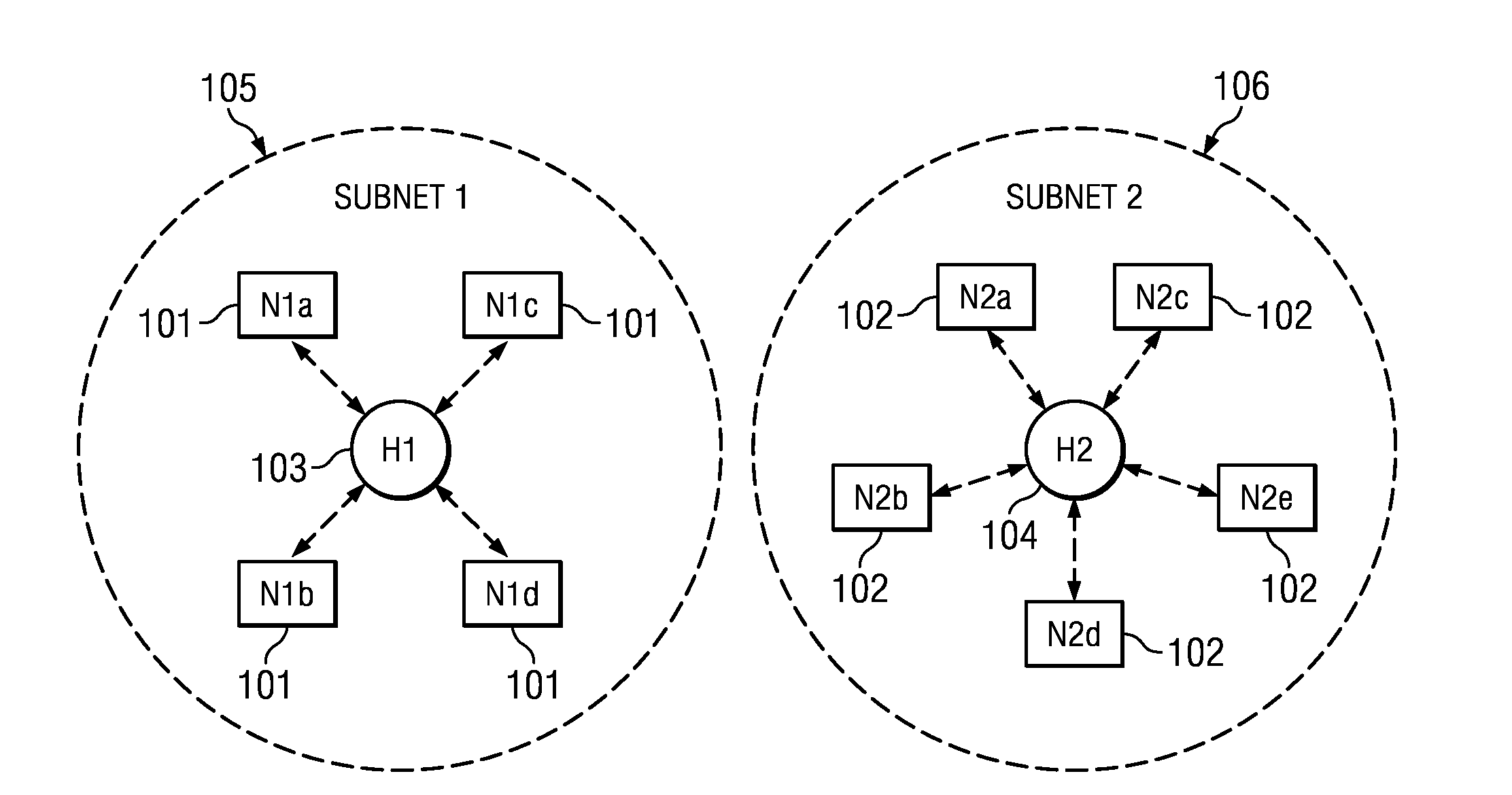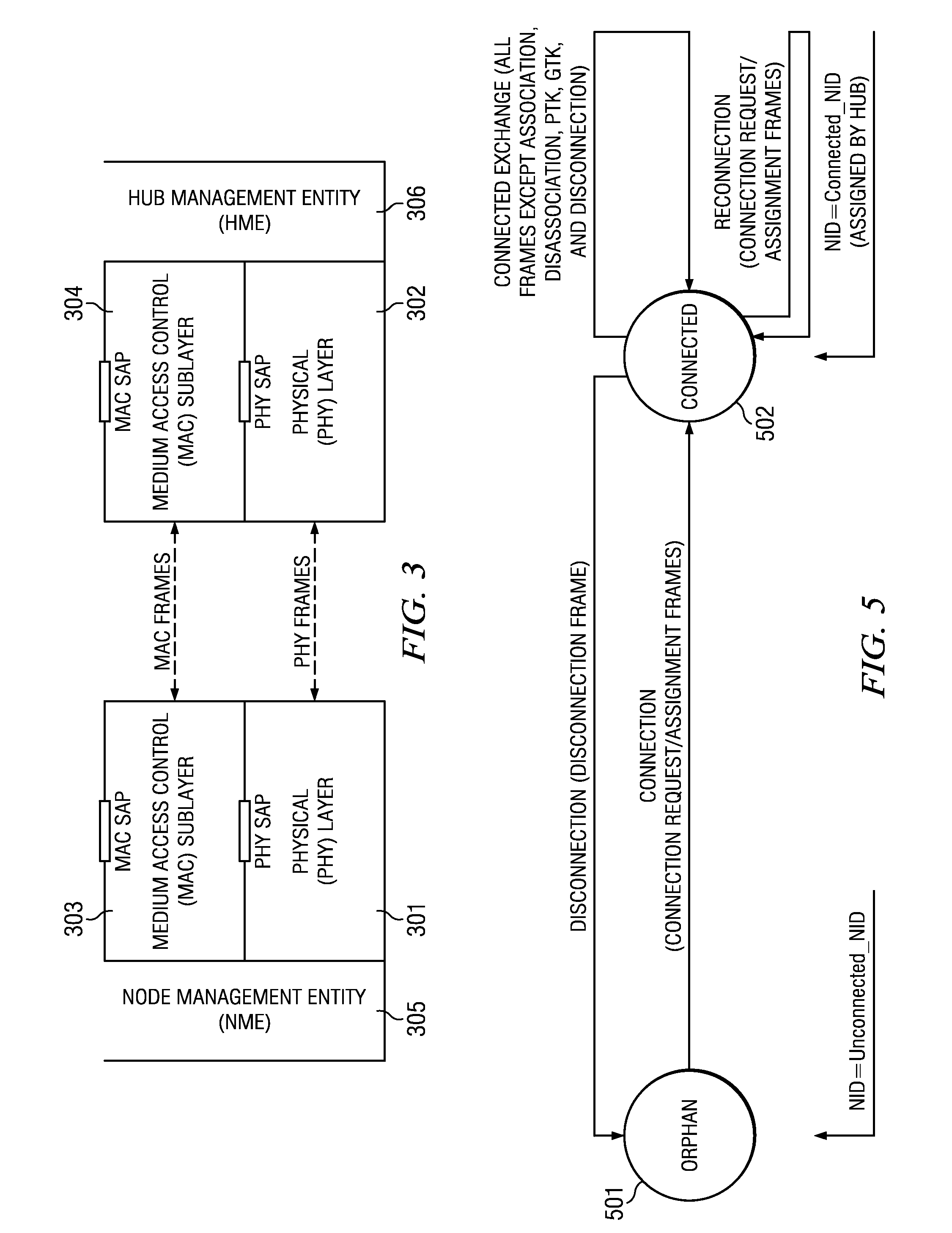Frame Structure for Medium Access in Body Area Networks (BAN)
a network and frame structure technology, applied in the field of access methods and power management, can solve problems such as inter-subnet interference, and achieve the effect of saving power and optimizing the amount of sleep or hibernation tim
- Summary
- Abstract
- Description
- Claims
- Application Information
AI Technical Summary
Benefits of technology
Problems solved by technology
Method used
Image
Examples
Embodiment Construction
[0084]The invention now will be described more fully hereinafter with reference to the accompanying drawings. This invention may, however, be embodied in many different forms and should not be construed as limited to the embodiments set forth herein. Rather, these embodiments are provided so that this disclosure will be thorough and complete, and will fully convey the scope of the invention to those skilled in the art. One skilled in the art may be able to use the various embodiments of the invention.
[0085]Embodiments of the invention provide a medium access control (MAC) sublayer in support of a physical layer for wireless body area networks (BANs). FIG. 1 illustrates a block diagram of hubs and nodes organized into logical sets, referred to as subnets in this specification. Subnets 101 and 102 may be independent BANs that operate independently. Each subnet 101, 102 includes a hub device (H1,H2) 103, 104 that communicates wirelessly with one or more nodes (N1a-d, N2a-d) 105, 106 in...
PUM
 Login to View More
Login to View More Abstract
Description
Claims
Application Information
 Login to View More
Login to View More - R&D
- Intellectual Property
- Life Sciences
- Materials
- Tech Scout
- Unparalleled Data Quality
- Higher Quality Content
- 60% Fewer Hallucinations
Browse by: Latest US Patents, China's latest patents, Technical Efficacy Thesaurus, Application Domain, Technology Topic, Popular Technical Reports.
© 2025 PatSnap. All rights reserved.Legal|Privacy policy|Modern Slavery Act Transparency Statement|Sitemap|About US| Contact US: help@patsnap.com



